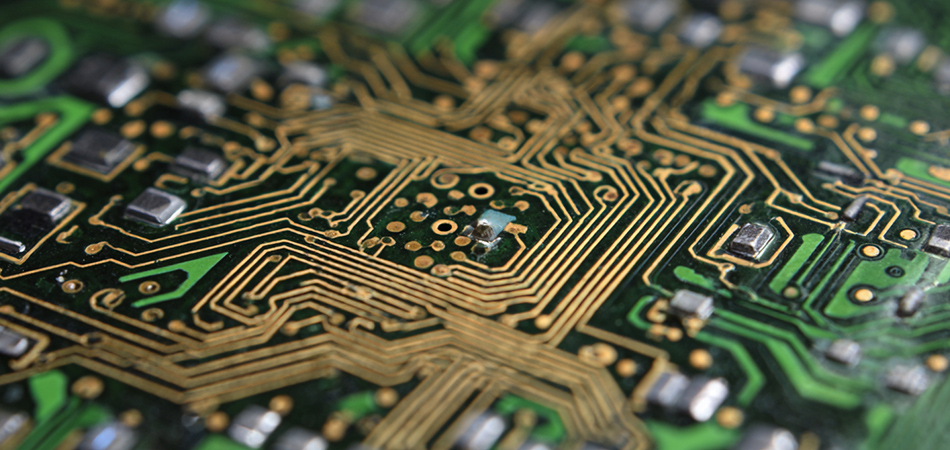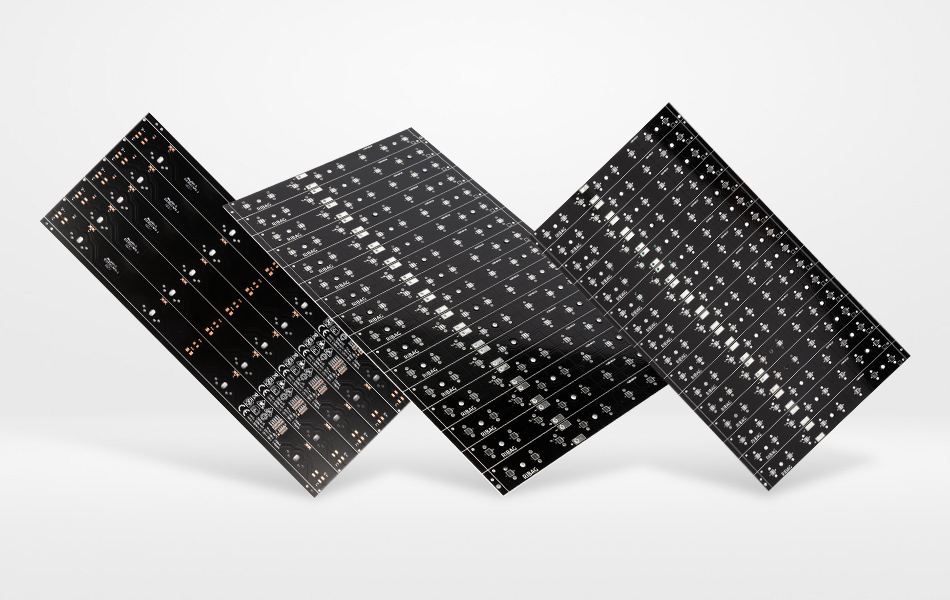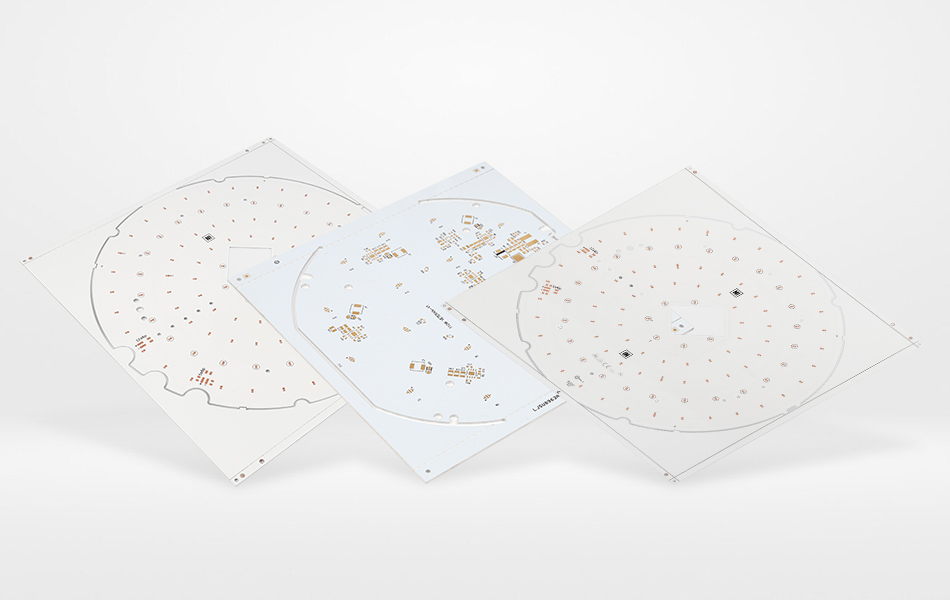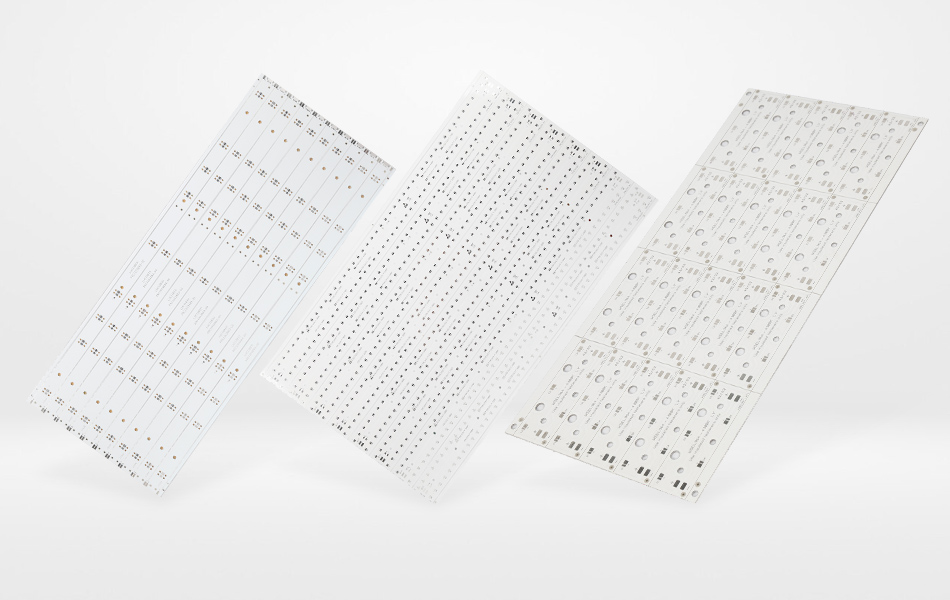-
- PCB TYPE
- PRINTED CIRCUIT BOARD PROTOTYPE ALUMINUM PRINTED CIRCUIT BOARD R&F PCB FPC HIGH FREQUENCY PCB HIGH-TG PCB HEAVY COPPER PCB HDI PCB PCB FOR LIGHTING METAL CORE PCB
time:Jun 20. 2025, 09:13:32
In the intricate ecosystem of modern electronics, Printed Circuit Boards (PCBs) serve as the essential building blocks that enable the functionality of countless devices. Among the diverse array of PCB types, the Single Layer Aluminum PCB stands out as a versatile and reliable solution, combining the unique properties of aluminum with the simplicity of a single - layer design. This type of PCB has found its place in a wide spectrum of applications, from basic consumer electronics to more specialized industrial and automotive systems. This article will embark on a comprehensive exploration of Single Layer Aluminum PCBs, delving into their fundamental characteristics, design intricacies, manufacturing processes, applications, market dynamics, and future prospects.
Understanding Single Layer Aluminum PCBs
Basic Structure and Composition
A Single Layer Aluminum PCB consists of three main components: an aluminum substrate, a thermally conductive dielectric layer, and a copper layer. The aluminum substrate forms the core of the PCB, providing both mechanical support and excellent thermal conductivity. It acts as a heat sink, efficiently absorbing and dissipating the heat generated by electronic components during operation.
Positioned between the aluminum substrate and the copper layer is the thermally conductive dielectric layer. Its primary function is to electrically isolate the aluminum from the electrical circuits while facilitating the transfer of heat. This layer is carefully engineered to strike a balance between electrical insulation and thermal conductivity, ensuring that the PCB can perform its dual role effectively.
The copper layer, located on the surface, is patterned to create the electrical traces and pads necessary for component mounting and signal transmission. This single - layer copper design simplifies the circuit layout compared to multi - layer PCBs, making it an ideal choice for applications where complexity can be minimized without sacrificing functionality.
Key Material Properties
Thermal Conductivity of Aluminum
Aluminum's high thermal conductivity is one of the most significant advantages of Single Layer Aluminum PCBs. Heat generated by components such as power transistors, LEDs, or integrated circuits can be rapidly transferred to the aluminum substrate. Once transferred, the heat is spread across the large surface area of the aluminum, preventing the formation of hotspots that could lead to component failure or performance degradation. This efficient heat dissipation capability ensures that the electronic components mounted on the PCB can operate within their optimal temperature range, enhancing the overall reliability and lifespan of the device.
Mechanical Strength and Lightweight Nature
The aluminum substrate provides the PCB with substantial mechanical strength, enabling it to withstand mechanical stress, vibrations, and impacts. This durability makes Single Layer Aluminum PCBs suitable for use in environments where rough handling or dynamic conditions are common. At the same time, aluminum is a lightweight material, which is a distinct advantage in applications where minimizing the weight of the electronic device is crucial, such as in portable electronics, aerospace, and automotive industries. The combination of mechanical strength and lightweight properties allows for the creation of robust yet compact electronic systems.
Electrical Insulation of the Dielectric Layer
The thermally conductive dielectric layer plays a vital role in ensuring electrical insulation between the aluminum substrate and the copper traces. Despite the conductive nature of aluminum and copper, this layer effectively prevents electrical short - circuits, allowing the PCB to function as a reliable electrical platform. It is designed to have high electrical resistance while still facilitating the transfer of heat, making it an essential component in maintaining the integrity of the electrical circuits on the PCB.

Design Considerations for Single Layer Aluminum PCBs
Circuit Layout Optimization
Designing the circuit layout for a Single Layer Aluminum PCB requires careful planning due to its single - layer nature. Designers must focus on creating a layout that minimizes trace lengths, avoids unnecessary crossovers, and ensures efficient signal routing. Since there is no option to route traces on multiple layers, the layout should be optimized to make the most of the available surface area. Special attention is given to power and ground traces to ensure a stable electrical supply and reduce electromagnetic interference (EMI).
Thermal Management Strategies
Effective thermal management is a critical aspect of designing Single Layer Aluminum PCBs. Component placement is key; heat - generating components should be positioned in areas that allow for maximum heat transfer to the aluminum substrate. This may involve placing them near the edges of the PCB where there is better air circulation or adjacent to heat - dissipating elements such as heat sinks. Thermal vias can also be strategically used to enhance heat transfer from the components to the substrate, improving overall thermal performance.
Component Compatibility and Placement
When designing a Single Layer Aluminum PCB, it is essential to consider the compatibility of the components with the PCB's structure and thermal properties. Components should be selected based on their power consumption, heat - generation characteristics, and physical size. Their placement should take into account factors such as signal integrity, ease of assembly, and the need to maintain a balanced distribution of heat across the PCB.

Manufacturing Processes of Single Layer Aluminum PCBs
Material Selection and Preparation
The manufacturing process begins with the careful selection of materials. High - quality aluminum sheets with consistent thickness and purity are chosen for the substrate. The copper foil for the traces is selected based on its electrical conductivity and surface quality. The thermally conductive dielectric material is also carefully selected for its electrical insulation properties, thermal conductivity, and adhesion to both the aluminum and copper layers. Before assembly, all materials are thoroughly cleaned to remove any contaminants, oxides, or impurities that could affect the bonding process.
Lamination
Lamination is a crucial step where the aluminum substrate, dielectric layer, and copper foil are bonded together. Heat and pressure are applied to cure the dielectric material, creating a strong and cohesive structure. Precise control of lamination parameters, such as temperature, pressure, and time, is essential to ensure a uniform bond and avoid defects such as voids, delaminations, or uneven bonding. Any imperfections in the lamination can significantly impact the thermal and electrical performance of the final PCB.
Drilling and Plating
After lamination, drilling is performed to create holes for component mounting, vias (if required), and electrical connections. High - precision drilling machines are used to ensure accurate hole placement and clean hole walls. Following drilling, the holes are plated with copper to create electrical connections between the components and the copper traces on the surface. The plating process, typically electroplating, requires careful control of parameters such as current density, plating time, and temperature to achieve a uniform and reliable copper deposit.
Circuit Patterning
Circuit patterning is the process of creating the electrical circuits on the copper layer. Photolithography is commonly used for this purpose. A photosensitive resist material is applied to the copper surface, and then a patterned mask is used to expose the resist to ultraviolet (UV) light. The exposed areas of the resist are chemically altered and removed during the development process, leaving the unexposed resist in the shape of the circuit pattern. The remaining copper is then etched away using an etching solution, leaving only the copper traces that form the electrical circuits.

Applications of Single Layer Aluminum PCBs
LED Lighting
One of the most prominent application areas for Single Layer Aluminum PCBs is in LED lighting. LEDs generate a significant amount of heat during operation, and efficient heat dissipation is crucial for maintaining their luminous efficiency and lifespan. Single Layer Aluminum PCBs can effectively manage the heat from LEDs, allowing for the design of compact and powerful LED lighting fixtures. They are widely used in various lighting applications, including indoor lighting, outdoor streetlights, and decorative lighting, where their combination of thermal management and simplicity is highly valued.
Consumer Electronics
In the consumer electronics industry, Single Layer Aluminum PCBs are used in a variety of devices. From simple portable speakers and chargers to some basic smart home devices, these PCBs provide a cost - effective and reliable solution. Their ability to handle moderate electrical loads, manage heat, and offer mechanical durability makes them suitable for consumer products that require a balance of performance and affordability.
Industrial Control Systems
For certain industrial control systems that do not require highly complex circuit designs, Single Layer Aluminum PCBs are a practical choice. They can handle the electrical requirements of components such as sensors, relays, and simple microcontrollers in industrial environments. Their thermal management capabilities ensure that these components can operate reliably even in the presence of heat generated by other equipment. Additionally, their mechanical strength allows them to withstand the harsh conditions often found in industrial settings, such as dust, moisture, and vibrations.
Automotive Electronics
In the automotive industry, Single Layer Aluminum PCBs find applications in various interior and non - critical electronic systems. They can be used in dashboard lighting, some control panels, and other non - safety - critical sub - systems. The lightweight nature of these PCBs contributes to reducing the overall weight of the vehicle, which is beneficial for fuel efficiency. Their thermal management and mechanical durability also make them suitable for use in the automotive environment, where they may be exposed to temperature fluctuations and vibrations.

Market Dynamics of Single Layer Aluminum PCBs
Market Growth
The global market for Single Layer Aluminum PCBs has been experiencing steady growth in recent years. This growth is driven by several factors, including the increasing demand for energy - efficient LED lighting solutions, the expansion of the consumer electronics market, and the growing adoption of these PCBs in industrial and automotive applications. As more industries recognize the benefits of Single Layer Aluminum PCBs in terms of thermal management, cost - effectiveness, and simplicity, the market is expected to continue its upward trajectory.
Competitive Landscape
The market for Single Layer Aluminum PCBs is highly competitive, with numerous manufacturers operating globally. Key players in the market include both established PCB manufacturers and emerging companies. Competition is based on factors such as product quality, cost - effectiveness, production efficiency, and customer service. Manufacturers are constantly investing in research and development to improve the performance of their PCBs, reduce production costs, and develop new manufacturing processes. They also strive to offer customized solutions to meet the specific requirements of different customers and industries.

Challenges and Future Trends
Challenges
Despite their many advantages, Single Layer Aluminum PCBs face several challenges. One of the main challenges is the cost - pressure from competitors. As the market becomes more saturated, manufacturers need to find ways to reduce production costs without sacrificing quality. Fluctuations in the prices of raw materials, such as aluminum and copper, can also impact the cost - effectiveness of production. Additionally, ensuring consistent quality during mass production, especially in terms of thermal and electrical performance, can be a challenge due to the complexity of the manufacturing processes involved.
Future Trends
The future of Single Layer Aluminum PCBs looks promising, with several trends likely to shape the industry. Advancements in materials science may lead to the development of new aluminum alloys or composite materials with improved thermal and mechanical properties. These new materials could further enhance the performance of Single Layer Aluminum PCBs. The integration of emerging technologies, such as the Internet of Things (IoT), 5G, and artificial intelligence (AI), may create new opportunities for these PCBs in applications that require a balance of simplicity, cost - effectiveness, and reliable performance.
The adoption of more automated and intelligent manufacturing processes is also expected. This can improve production efficiency, reduce costs, and enhance quality control. Moreover, the growing focus on environmental sustainability may drive the development of more eco - friendly manufacturing processes and materials for Single Layer Aluminum PCBs, making them even more attractive in the market.
Conclusion
Single Layer Aluminum PCBs have firmly established themselves as a fundamental and versatile solution in the electronics industry. Their unique combination of thermal management capabilities, mechanical strength, electrical insulation, and simplicity makes them suitable for a wide range of applications across multiple industries. While facing challenges related to cost and quality control, the ongoing advancements in materials, manufacturing technologies, and emerging trends offer significant opportunities for growth and innovation. As the electronics industry continues to evolve, Single Layer Aluminum PCBs are likely to remain an important part of the PCB landscape, enabling the development of more efficient, reliable, and cost - effective electronic devices.

Got project ready to assembly? Contact us: info@apollopcb.com



We're not around but we still want to hear from you! Leave us a note:

Leave Message to APOLLOPCB
